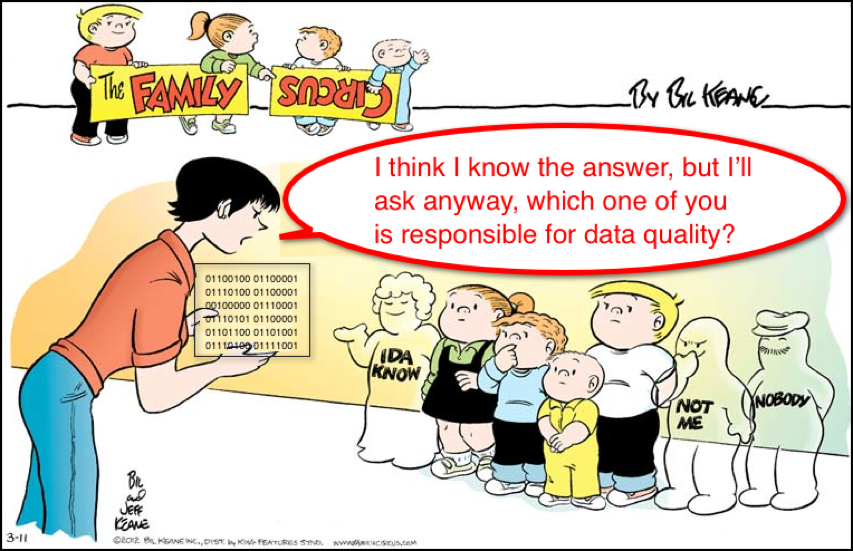Demystifying Master Data Management
/OCDQ Radio is a vendor-neutral podcast about data quality and its related disciplines, produced and hosted by Jim Harris.
During this episode, special guest John Owens and I attempt to demystify master data management (MDM) by explaining the three types of data (Transaction, Domain, Master) and the four master data entities (Party, Product, Location, Asset), as well as, and perhaps the most important concept of all, the Party-Role Relationship, which is where we find many of the terms commonly used to describe the Party master data entity (e.g., Customer, Supplier, Employee).
John Owens is a thought leader, consultant, mentor, and writer in the worlds of business and data modelling, data quality, and master data management (MDM). He has built an international reputation as a highly innovative specialist in these areas and has worked in and led multi-million dollar projects in a wide range of industries around the world.
John Owens has a gift for identifying the underlying simplicity in any enterprise, even when shrouded in complexity, and bringing it to the surface. He is the creator of the Integrated Modelling Method (IMM), which is used by business and data analysts around the world. Later this year, John Owens will be formally launching the IMM Academy, which will provide high quality resources, training, and mentoring for business and data analysts at all levels.
You can also follow John Owens on Twitter and connect with John Owens on Linkedin. And if you’re looking for a MDM course, consider the online course from John Owens, which you can find by clicking on this link: MDM Online Course (Affiliate Link)
Popular OCDQ Radio Episodes
Clicking on the link will take you to the episode’s blog post:
- Demystifying Data Science — Guest Melinda Thielbar, a Ph.D. Statistician, discusses what a data scientist does and provides a straightforward explanation of key concepts such as signal-to-noise ratio, uncertainty, and correlation.
- Data Quality and Big Data — Guest Tom Redman (aka the “Data Doc”) discusses Data Quality and Big Data, including if data quality matters less in larger data sets, and if statistical outliers represent business insights or data quality issues.
- Gaining a Competitive Advantage with Data — Guest William McKnight discusses some of the practical, hands-on guidance provided by his book Information Management: Strategies for Gaining a Competitive Advantage with Data.
- Doing Data Governance — Guest John Ladley discusses his book How to Design, Deploy and Sustain Data Governance and how to understand the difference and relationship between data governance and enterprise information management.
- Measuring Data Quality for Ongoing Improvement — Guest Laura Sebastian-Coleman discusses bringing together a better understanding of what is represented in data with the expectations for use in order to improve the overall quality of data.
- The Blue Box of Information Quality — Guest Daragh O Brien on why Information Quality is bigger on the inside, using stories as an analytical tool and change management technique, and why we must never forget that “people are cool.”
- Data Governance Star Wars — Special Guests Rob Karel and Gwen Thomas joined this extended, and Star Wars themed, discussion about how to balance bureaucracy and business agility during the execution of data governance programs.
- Good-Enough Data for Fast-Enough Decisions — Guest Julie Hunt discusses Data Quality and Business Intelligence, including the speed versus quality debate of near-real-time decision making, and the future of predictive analytics.
- The Johari Window of Data Quality — Guest Martin Doyle discusses helping people better understand their data and assess its business impacts, not just the negative impacts of bad data quality, but also the positive impacts of good data quality.
- The Art of Data Matching — Guest Henrik Liliendahl Sørensen discusses data matching concepts and practices, including different match techniques, candidate selection, presentation of match results, and business applications of data matching.
- Studying Data Quality — Guest Gordon Hamilton discusses the key concepts from recommended data quality books, including those which he has implemented in his career as a data quality practitioner.

 Recently on Twitter,
Recently on Twitter,  Last week, when I published my blog post
Last week, when I published my blog post 




